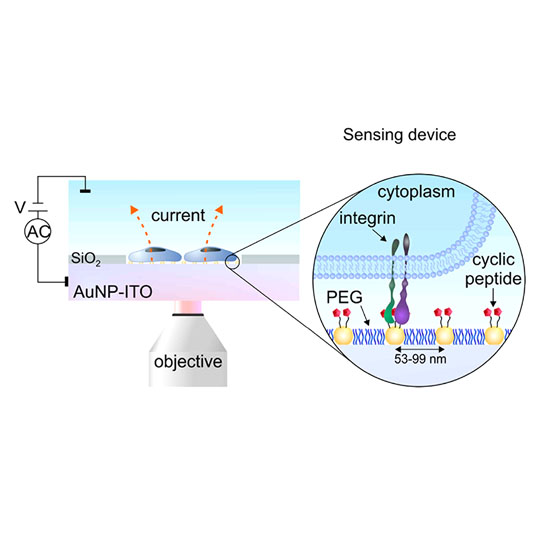Highly Ordered Gold Nanopatterned Indium Tin Oxide Electrodes for Simultaneous Optical and Electrochemical Probing Cell Interactions
29-Aug-2017
Anal. Chem., 2017, 89 (18), pp 10054–10062, DOI: 10.1021/acs.analchem.7b02743
Anal. Chem., online article
The formation of new types of sensitive conductive surfaces for the detection and transduction of cell–extracellular matrix recognition events in a real time, label-free manner is of great interest in the field of biomedical research. To study molecularly defined cell functions, biologically inspired materials that mimic the nanoscale order of extracellular matrix protein fibers and yield suitable electrical charge transfer characteristics are highly desired. Our strategy to achieve this goal is based on the spatial self-organization of patches of cell-adhesive molecules onto a gold-nanoparticle-patterned indium tin oxide electrode. Fibroblast adhesion response to selective ligands for integrins α5β1 and αvβ3, which are both relevant in cancer progression, is investigated by simultaneous electrochemical impedance spectroscopy and optical microscopy. Adhesive cells on α5β1-selective nanopatterns showed enhanced membrane dynamics and tighter binding, compared with cells on αvβ3-selective nanopatterns. The surface of the electrode exhibits high sensitivity to small changes in surface properties, because of the constitution of specific cell-surface interactions. Moreover, such sensitivity enables differentiation between cell types. This is exemplified by analyzing distinct features in the electrochemical readout of MCF-7 breast cancer cells versus MCF-10A mammary epithelial cells, when subjected to individual adhesive nanopatches.











